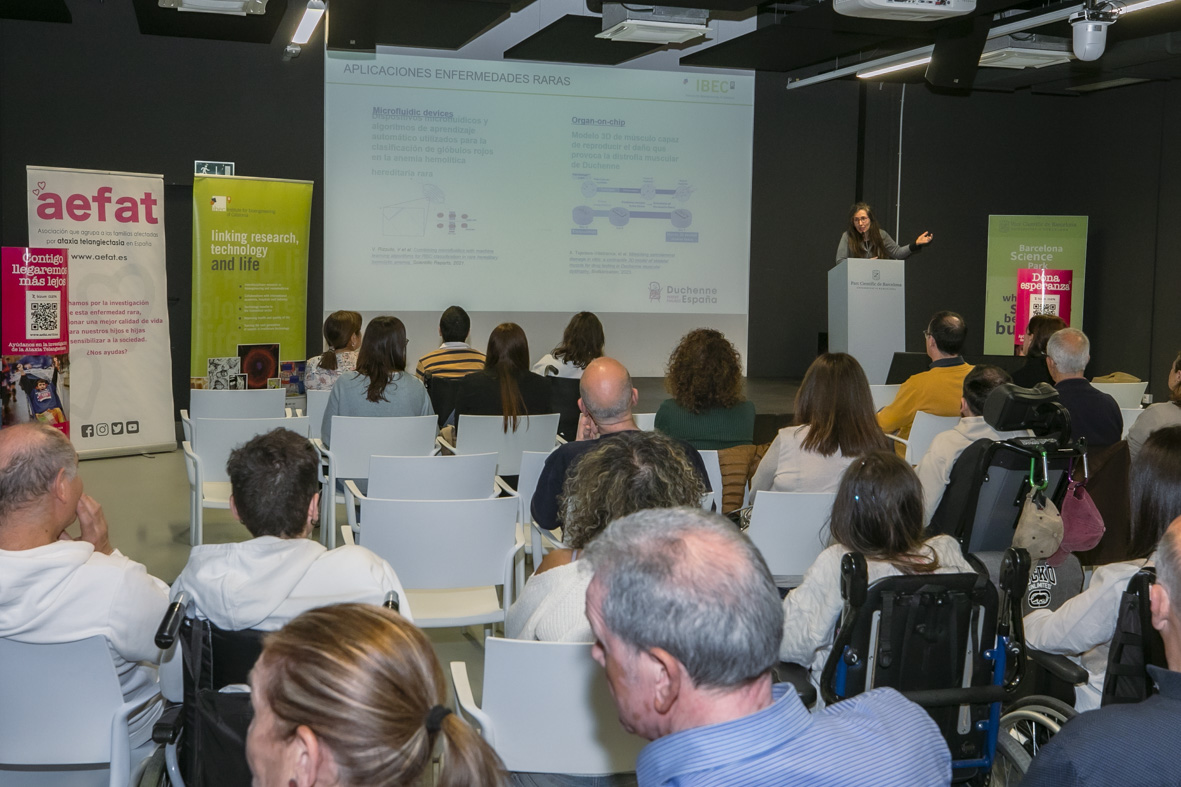
(English version below) La investigación de la ataxia telangiectasia avanza más rápido gracias al esfuerzo conjunto de investigadores, clínicos y familias, tal como se demostró en el evento “Avances en Ataxia Telangiectasia”, organizado hace unos días en Barcelona por el Instituto de Bioingeniería de Cataluña (IBEC), en colaboración con Aefat, la asociación que agrupa a las familias afectadas por ataxia telangiectasia en España.
El encuentro, celebrado en el Parque Científico de Barcelona (PCB) el pasado 8 de marzo de 2024, reunió a pacientes, familiares, investigadores y clínicos con el propósito de informar sobre los proyectos de investigación otorgados recientemente por Aefat, buscar vínculos entre investigadores y avanzar más rápido en la búsqueda de una cura o tratamiento para esta enfermedad rara que afecta al menos a 40 niños y jóvenes en España. Una enfermedad genética, neurodegenerativa y multisistémica, que provoca una grave discapacidad física progresiva, inmunodeficiencia y alta probabilidad de cáncer, entre otras complicaciones.
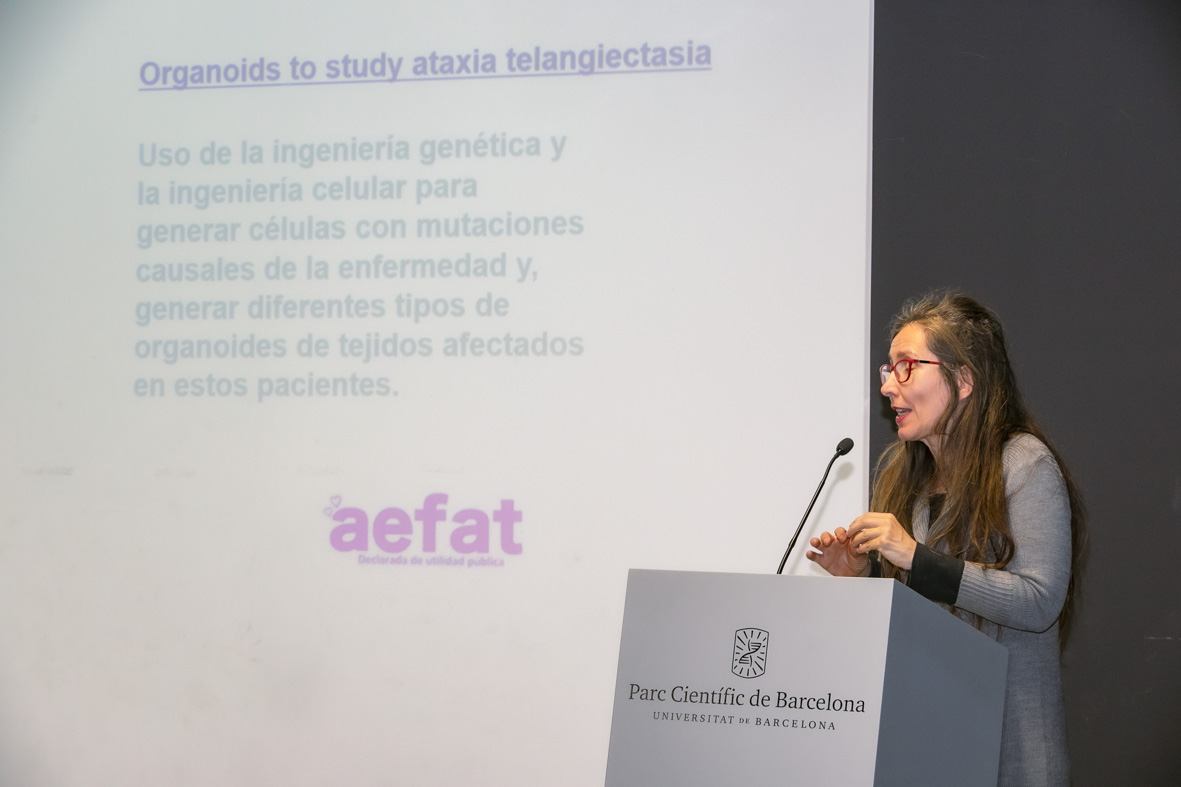
La jornada se inició con un pequeño aperitivo y la bienvenida a los asistentes de la mano de Teresa Sanchis, responsable de Estrategia del IBEC, que explicó la visión general de la investigación que se lleva a cabo en el centro, también con otras enfermedades raras, y el espíritu colaborativo del equipo. “En IBEC nos gusta conocer a los pacientes, colaborar con ellos y organizar jornadas de sensibilización y divulgación científica, por responsabilidad hacia la sociedad”.
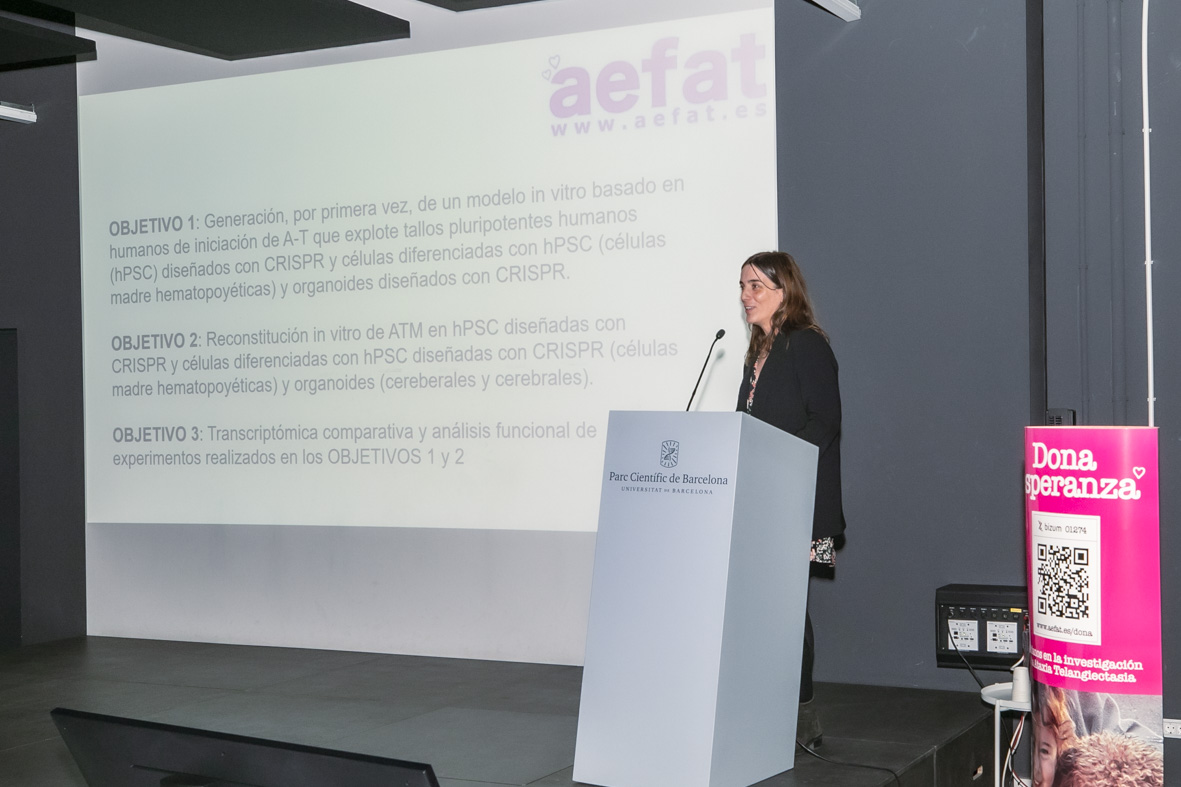
Núria Montserrat, investigadora principal en el IBEC y beneficiaria de uno de los proyectos de investigación financiados por Aefat desde enero, explicó a los asistentes las claves de su misión. El proyecto de Montserrat, titulado “Modelling Ataxia Telangiectasia pathogenesis and therapeutics using human pluripotent stem cells and genetic engineering”, tiene como objetivo desarrollar organoides a partir de células madre embrionarias con las mutaciones de los pacientes, que permitan ensayar procesos de edición génica para distintas mutaciones y crear una plataforma para testar fármacos.
“Podemos crear células que se parezcan a las del órgano que queremos estudiar, para probar medicamentos, ahorrar ensayos clínicos y acortar tiempos en la investigación”, señaló la investigadora. “Tenemos tres objetivos en dos años: producir tejidos que tengan las mutaciones de la ataxia telangiectasia, es decir, crear los organoides, y custodiarlos en los biobancos de la Plataforma ISCIII de Biomodelos y Biobancos, que en la actualidad cuenta con más de 60 unidades trabajando en red”. También añadió que este proyecto “va a permitir estudiar el proceso de los mecanismos celulares en el cerebelo, uno de los órganos donde afecta esta enfermedad, y así identificar vías moleculares para testar fármacos que pueden suponer un tratamiento para los pacientes, para avanzar más rápido”.
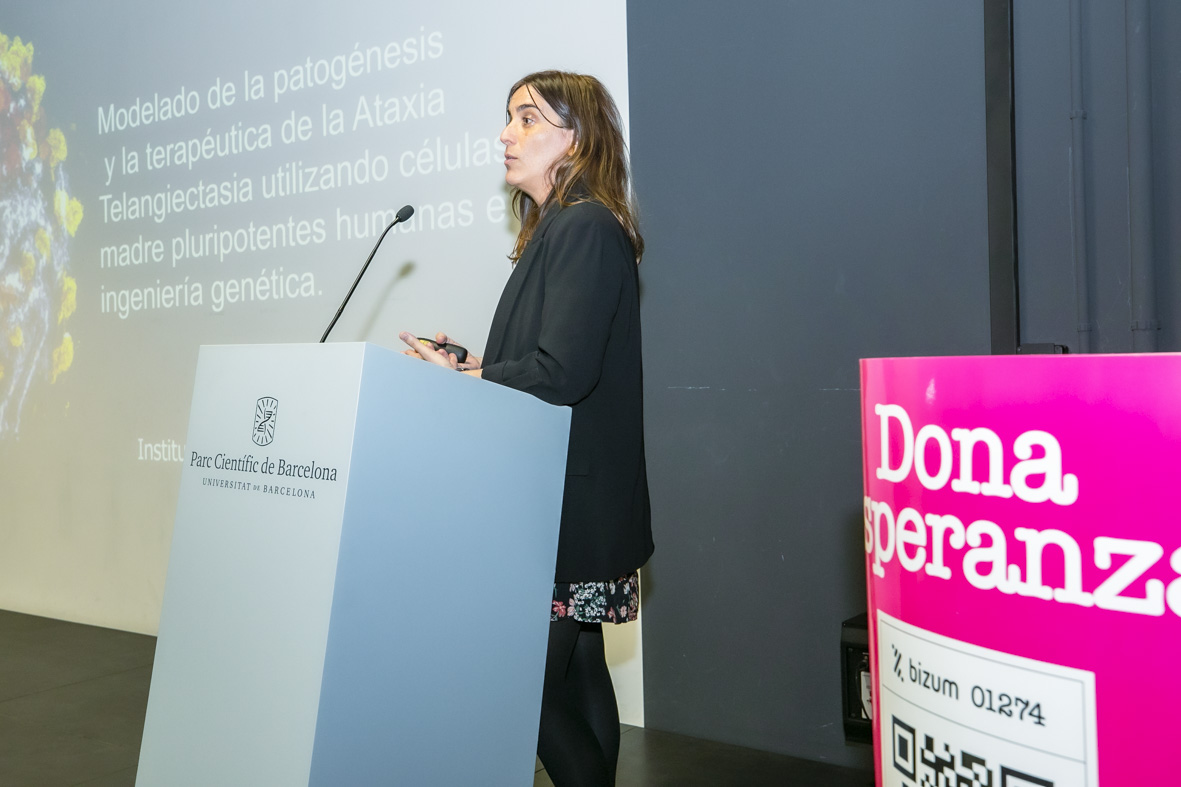
En palabras de Núria Montserrat, coordinadora de la Plataforma ISCIII de Biomodelos y Biobancos, “para nosotros es un honor y una responsabilidad, y cuando terminemos, es fundamental que todo el conocimiento y tecnologías que se generen estén a disposición de la asociación y los pacientes, para contribuir al progreso constante en la investigación de la ataxia telangiectasia”.
Montserrat trabaja en colaboración con otros investigadores que también intervinieron en el evento. El investigador Marc Güell, que ya colabora con Aefat, explicó que utilizan Find Cut-and-Transfer (FiCAT), una herramienta para modificar el ADN, capaz de escribir con precisión genes pequeños y grandes. Esta nueva tecnología de escritura de genes, desarrollada por el equipo de investigadores del Laboratorio de Biología Sintética Traslacional de la UPF que dirige, permitirá obtener terapias más efectivas y seguras en su futura aplicación clínica en pacientes con enfermedades genéticas como la ataxia telangiectasia, cuya mutación se encuentra en un gen grande. Se basa en la combinación de las proteínas modificadas CRISPR-cas y transposasa piggy Bac (PB).
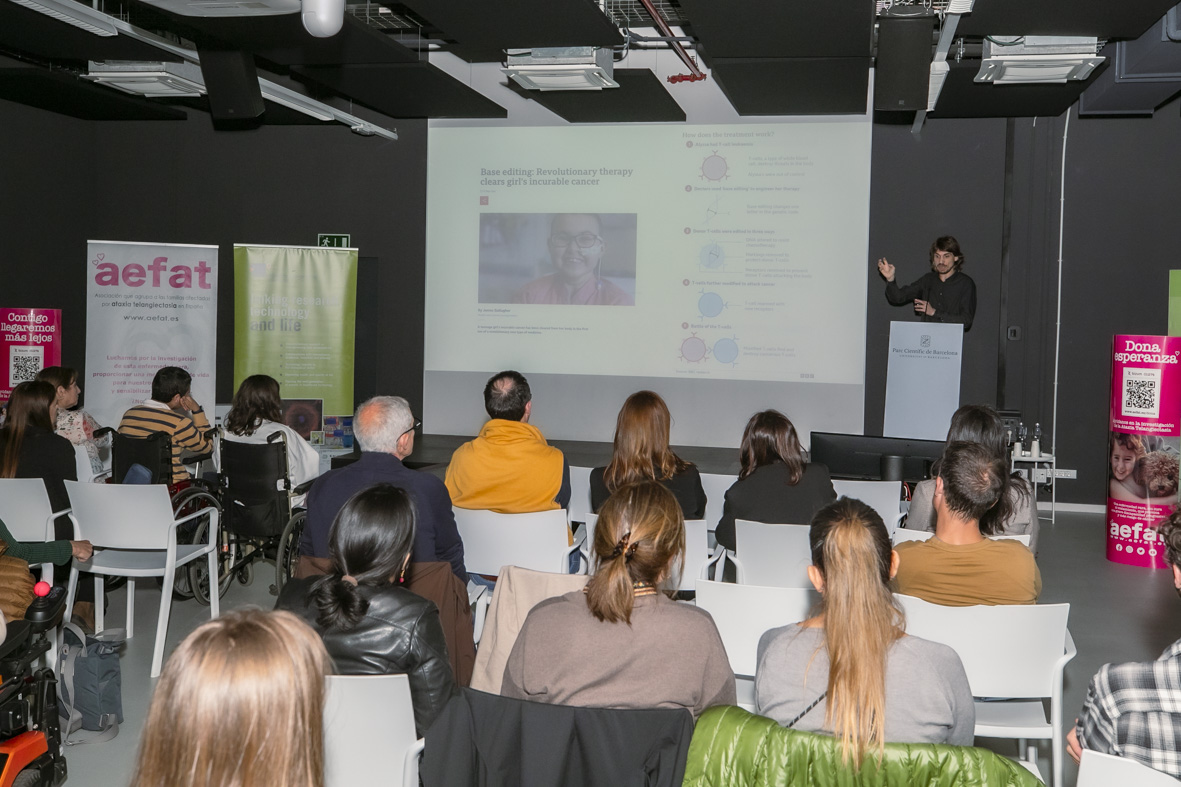
Marc Güell resaltó que “hemos visto grandes avances en la modificación genética en los últimos 7 años, con el CRISPR, cuyas primeras terapias se aprobaron a finales del año pasado. La revolución es unir biología y tecnología. Ahora con nuestras nuevas herramientas, no solo usamos CRISPR, le añadimos editores de base, otra funcionalidad que nos permite cambiar las bases, ser más precisos, cambiar letras del ADN, y las aplicaciones ya están llegando a la clínica, por ejemplo en cáncer”.
“Con la ataxia telangiectasia, estamos usando esta tecnología para transferir el gen ATM en células madre hematopoyéticas, probando en ratones y luego en humanos. Ha sido complicado en ratones, y hemos cambiado a células humanas del Banco de Sangre de Barcelona. Hemos construido dos familias de vectores, vamos probando aumentando el porcentaje de células mutadas, y hemos elegido una zona segura del genoma para insertar en gen. Ha costado construir los vectores pero uno de ellos se inserta bien, hay buena expresión. Estamos intentando optimizar las condiciones para fases posteriores, para que el tratamiento no genere toxicidad”.
También intervinieron Roberto Bilbao, director científico del Biobanco Vasco, uno de los biobancos de la Plataforma ISCIII de Biomodelos y Biobancos que participarán en el proyecto; Jordi Surrallés, director del Instituto de Investigación del Hospital de la Santa Creu i Sant Pau, que aportará su experiencia en otras enfermedades raras; y Alejandra Darling, neuróloga pediátrica del Hospital Sant Joan de Déu, que explicó al detalle en qué consiste la enfermedad.
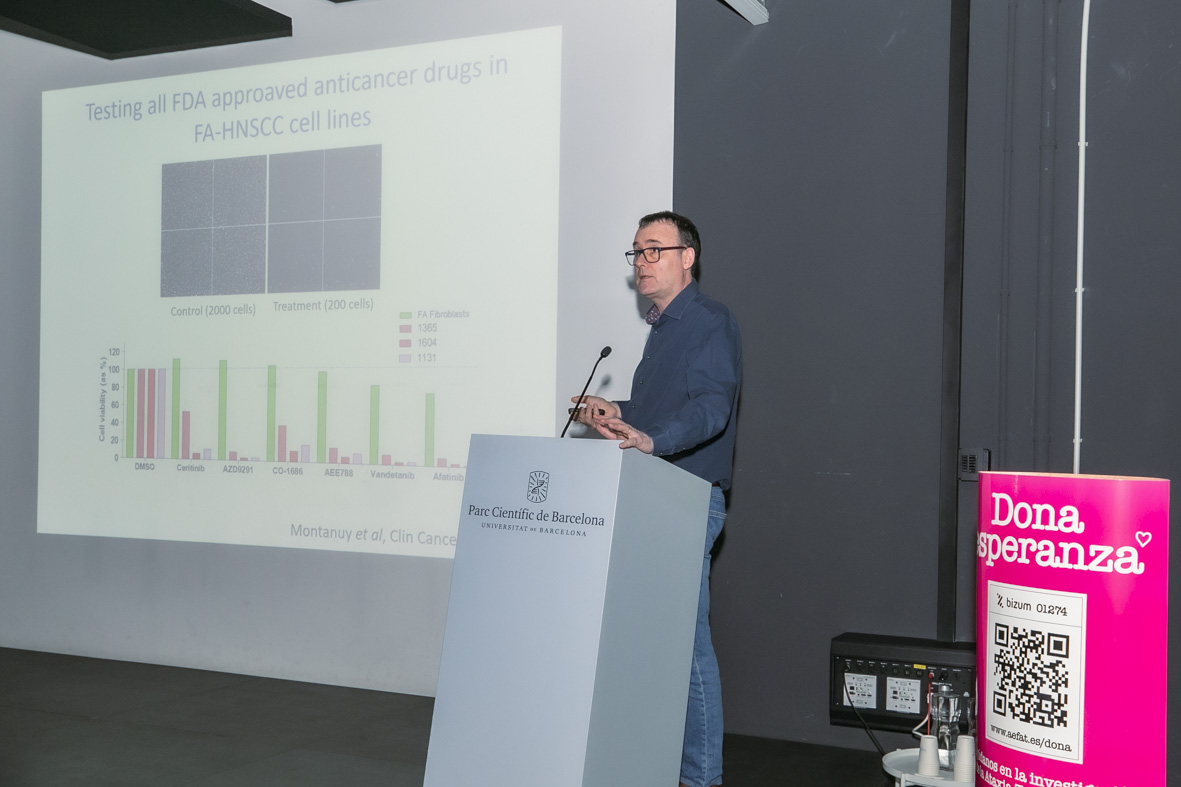
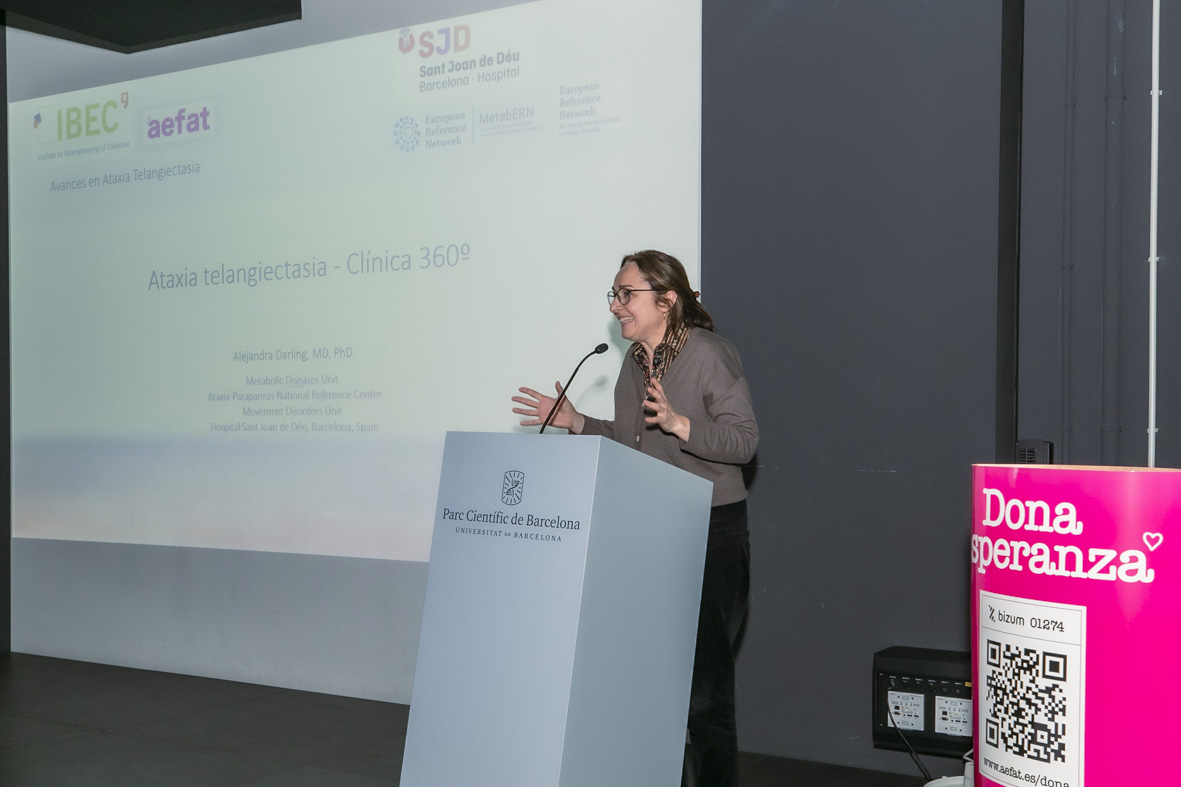
La ataxia telangiectasia (AT o A-T) es uno de los 300 tipos de ataxias que existen y provoca una grave discapacidad física progresiva. Es una enfermedad rara, genética y neurodegenerativa que se manifiesta habitualmente antes de los dos años de edad, aunque hay afectados que han esperado hasta 10 años para el diagnóstico porque se confunde con otras patologías. Afecta a las funciones de diferentes órganos y provoca incapacidad de coordinar movimientos, pérdida progresiva de movilidad (hacia los 9 años se necesita silla de ruedas), dificultad en el habla, estancamiento en el crecimiento, inmunodeficiencia, dificultades para comer, problemas en la piel y en la visión, neumonías y otras complicaciones. Los pacientes son más proclives a los tumores malignos (como los sarcomas, linfomas, leucemias...).
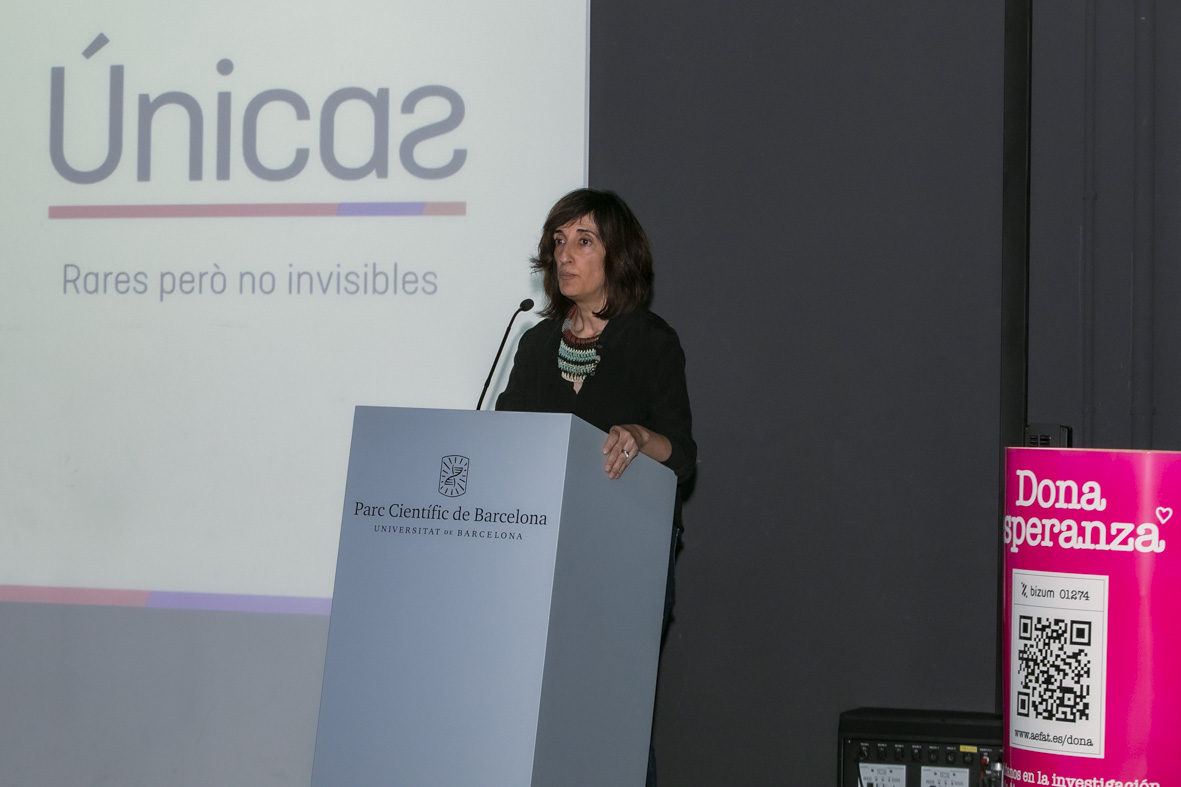
Por su parte, Fátima Núñez, adjunta de la Dirección de Investigación, Innovación y Aprendizaje del Hospital Sant Joan de Déu de Barcelona, presentó a los asistentes la Red Únicas, una iniciativa de este hospital con Feder (Federación Española de Enfermedades Raras), para avanzar en investigación y tratamientos de enfermedades raras en España, con la colaboración ya de 30 centros. “La dispersión del conocimiento y la falta de coordinación de sistemas sanitarios es un problema grave en enfermedades raras. Estamos creando una plataforma de datos integrada, queremos acompañar e informar a los pacientes, que vean a todos los especialistas en un día, promover más diagnósticos y terapias, proveer soluciones digitales tener datos compartidos, y poner en contacto a clínicos e investigadores”.
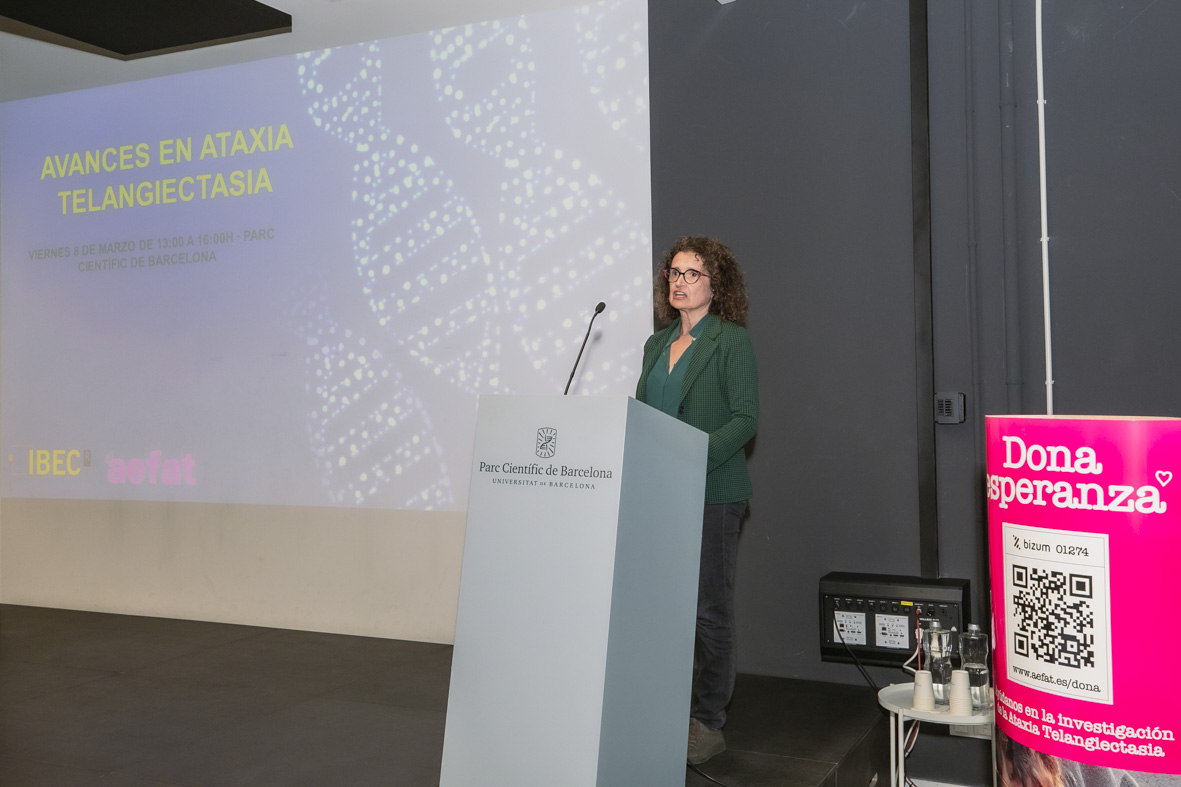
Por último, Josefina Mengíbar, tía de una niña con ataxia telangiectasia y bióloga colaboradora en temas de investigación de Aefat, agradeció, en nombre de la asociación, “la excelencia profesional y humana” de los investigadores y clínicos que intervinieron en el evento y “su buena disposición a colaborar entre equipos”.
Varias familias expresaron su emoción con sus testimonios, dando las gracias a los investigadores por su entusiasmo y dedicación, y manifestando la esperanza en encontrar una cura o tratamiento.
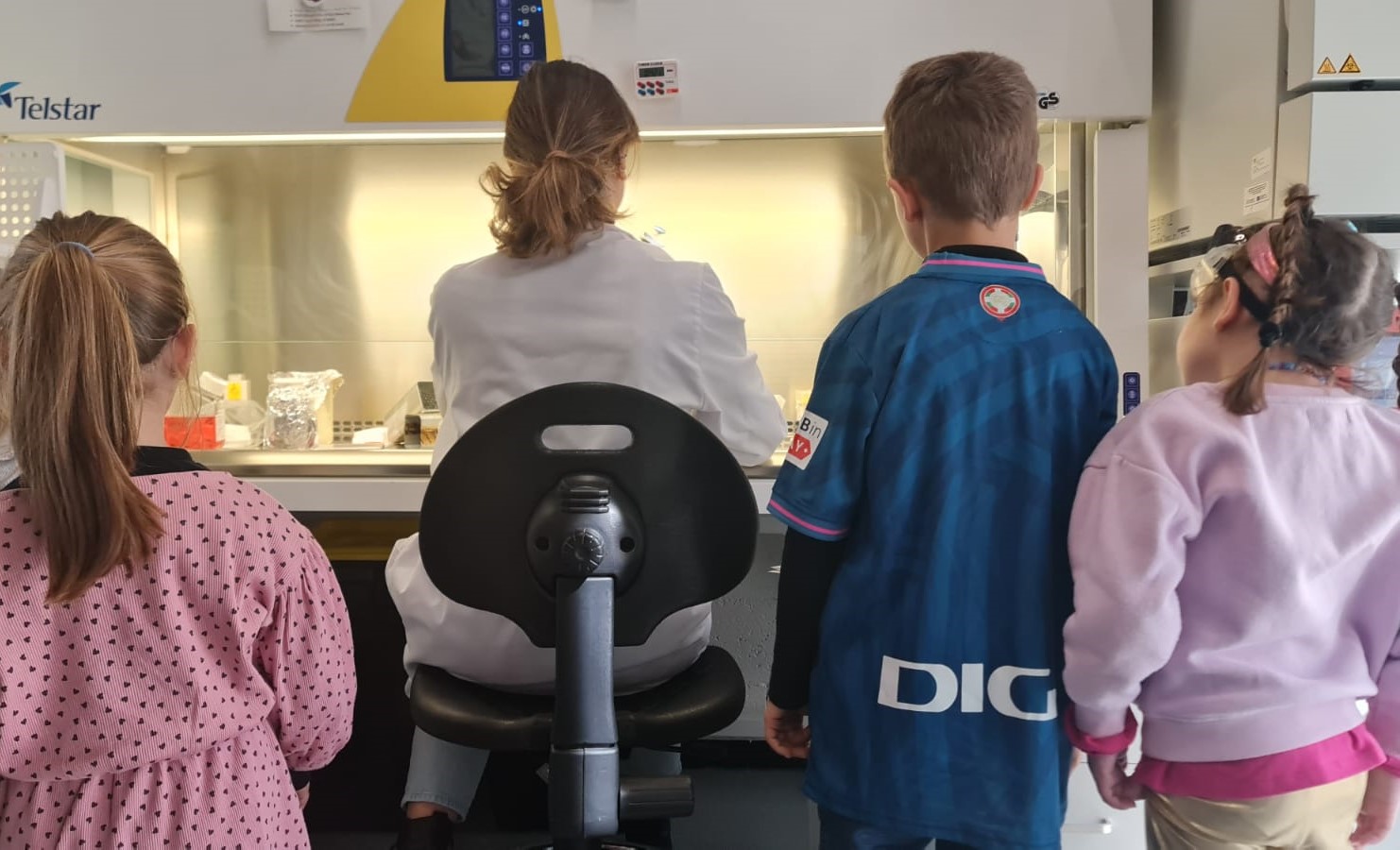
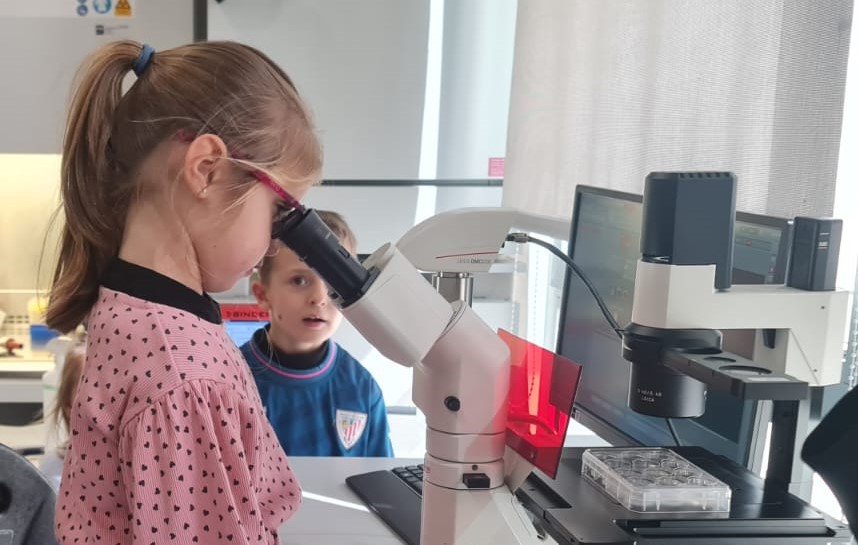
Tras la clausura, los asistentes visitaron las instalaciones del IBEC y de la mano de la Dra. Carolina Tarantino, miembro del laboratorio de Nuria Montserrat, pudieron ser testigos de las investigaciones que se están llevando ya hoy en día en el marco del proyecto.
En la actualidad, con estos dos últimos proyectos, Aefat está cofinanciando 9 proyectos de investigación nacionales e internacionales, junto con asociaciones similares de otros países, y en total, desde 2015, suma más de 600.000 euros invertidos en 12 proyectos de investigación de la ataxia telangiectasia.
Aefat es una asociación sin ánimo de lucro creada en 2009 y declarada de utilidad pública desde 2014. La asociación pertenece a FEDER (Federación Española de Enfermedades Raras) y la A-T Global Alliance (www.cureat.org). Aefat también mantiene contacto cercano con las familias de afectados en Iberoamérica.
Para saber en 2 minutos qué es la ATAXIA TELANGIECTASIA (vídeo explicado por familias y afectados de todo el mundo):
https://www.youtube.com/watch?v=rtwGsOa0kV4
Fotos: Xavier d’Arquer
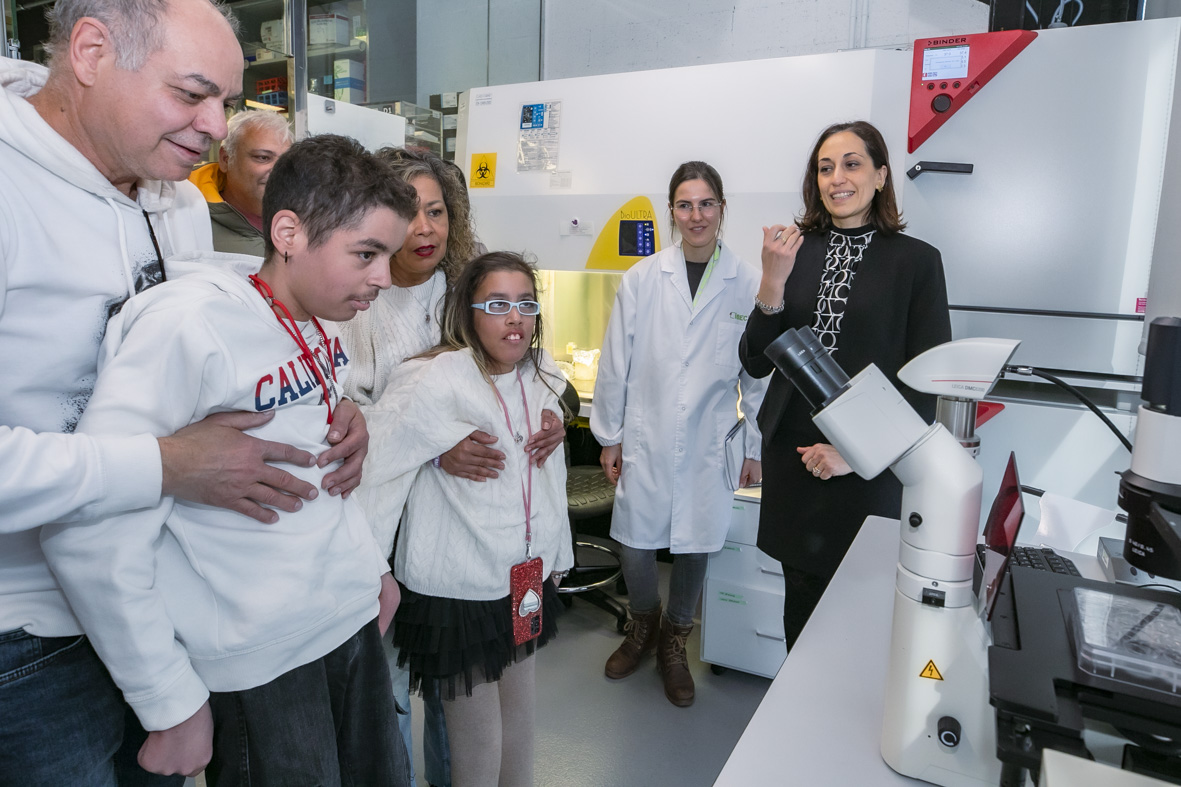
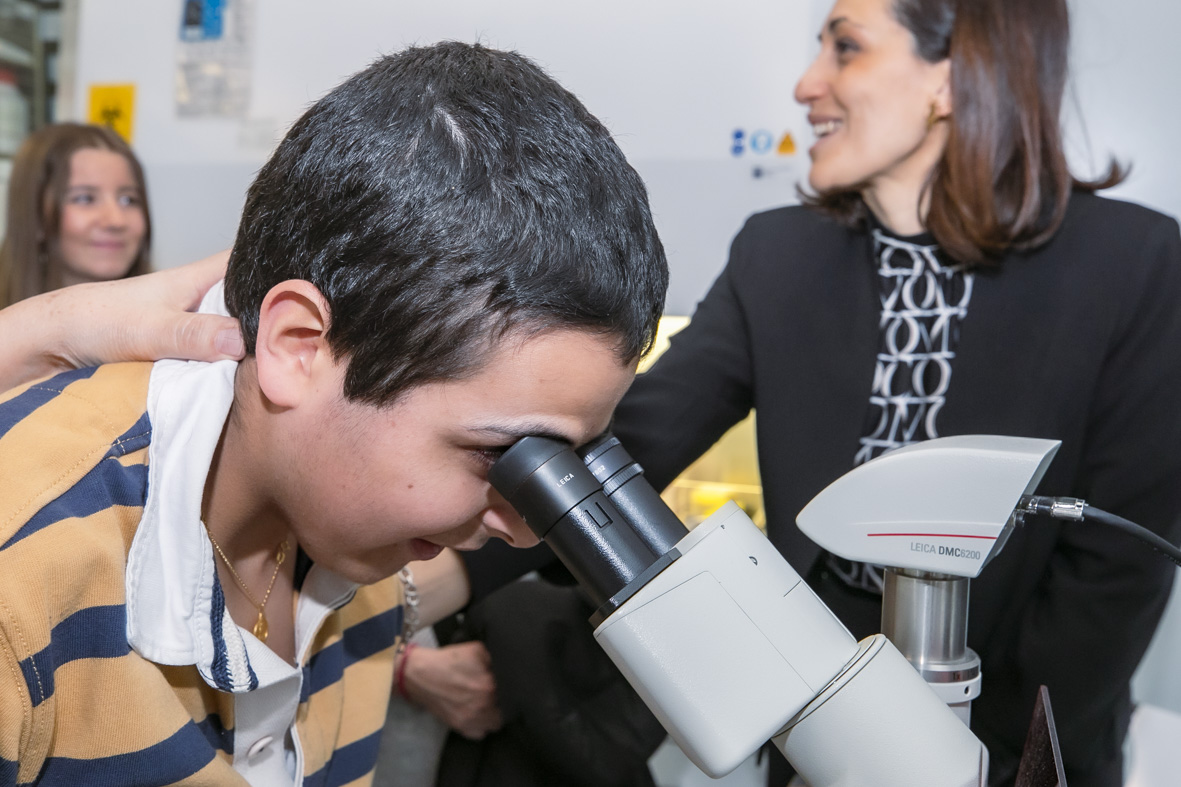
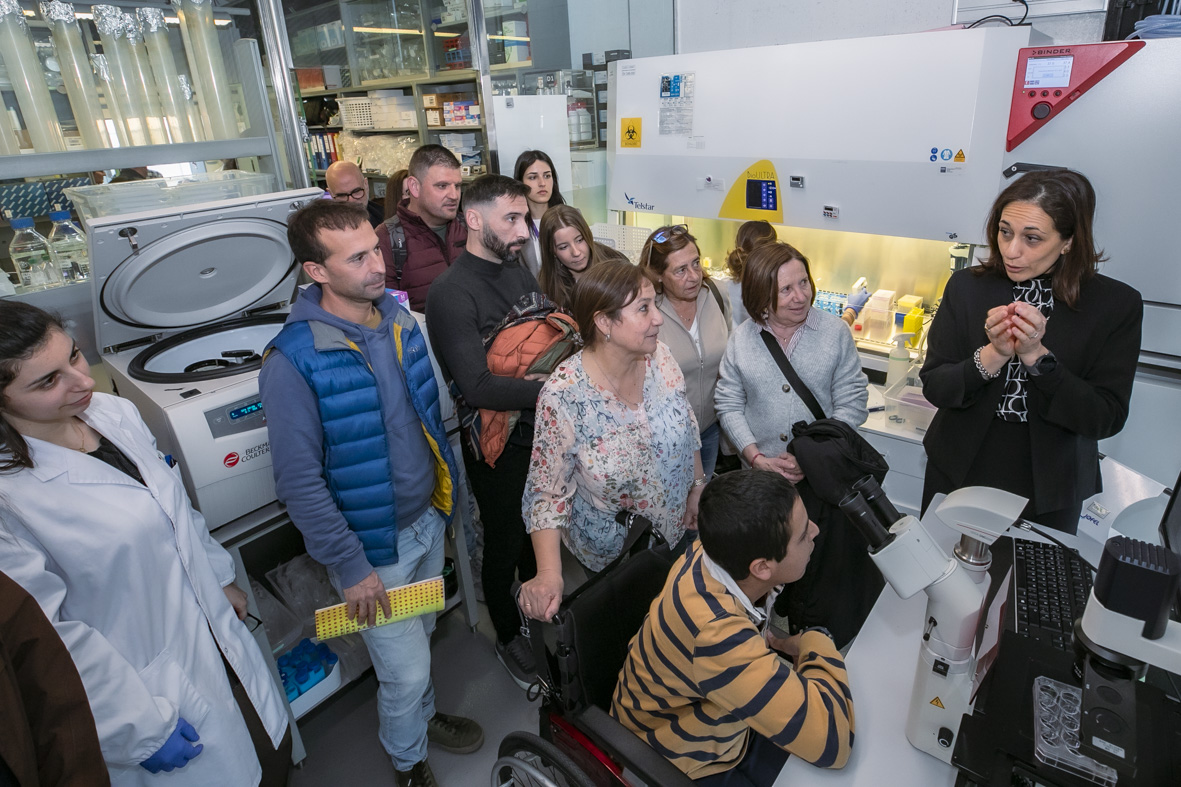
Organoids and gene editing to advance ataxia telangiectasia research
Research into ataxia telangiectasia is advancing faster thanks to the joint efforts of researchers, clinicians and families, as demonstrated at the event “Advances in Ataxia Telangiectasia”, organized a few days ago in Barcelona by the Institute of Bioengineering of Catalonia (IBEC), in collaboration with Aefat, the association that brings together families affected by ataxia telangiectasia in Spain.
The meeting, held at the Barcelona Science Park (PCB) on March 8, 2024, brought together patients, families, researchers and clinicians with the purpose of reporting on the research projects recently awarded by Aefat, seeking links between researchers and move faster in the search for a cure or treatment for this rare disease that affects at least 40 children and young people in Spain. A genetic, neurodegenerative and multisystem disease, which causes serious progressive physical disability, immunodeficiency and a high probability of cancer, among other complications.
The day began with a small aperitif and a welcome to the attendees by Teresa Sanchis, head of IBEC Strategy, who explained the general vision of the research carried out at the center, also with other rare diseases, and the collaborative spirit of the team. “At IBEC we like to get to know patients, collaborate with them and organize awareness-raising and scientific dissemination sessions, out of responsibility towards society.”
Núria Montserrat, principal researcher at IBEC and beneficiary of one of the research projects funded by Aefat since January, explained to the attendees the keys to her mission. The Montserrat project, entitled “Modelling Ataxia Telangiectasia pathogenesis and therapeutics using human pluripotent stem cells and genetic engineering”, aims to develop organoids from embryonic stem cells with the patients' mutations, which allow testing gene editing processes for different mutations and create a platform to test drugs.
“We can create cells that resemble those of the organ we want to study, to test medications, save clinical trials and shorten research times,” said the researcher. “We have three objectives in two years: produce tissues that have the ataxia telangiectasia mutations, that is, create the organoids, and store them in the biobanks of the ISCIII Biomodels and Biobanks Platform, which currently has more than 60 units. working in a network.” He also added that this project "will allow us to study the process of cellular mechanisms in the cerebellum, one of the organs where this disease affects, and thus identify molecular pathways to test drugs that may provide a treatment for patients, to advance faster."
In the words of Núria Montserrat, coordinator of the ISCIII Biomodels and Biobanks Platform, “for us it is an honor and a responsibility, and when we finish, it is essential that all the knowledge and technologies that are generated are available to the association and patients, to contribute to constant progress in research into ataxia telangiectasia.”
Montserrat works in collaboration with other researchers who also participated in the event. Researcher Marc Güell, who already collaborates with Aefat, explained that they use Find Cut-and-Transfer (FiCAT), a tool to modify DNA, capable of accurately writing small and large genes. This new gene writing technology, developed by the team of researchers from the UPF Translational Synthetic Biology Laboratory that he directs, will allow for more effective and safer therapies in their future clinical application in patients with genetic diseases such as ataxia telangiectasia, whose mutation It is found in a large gene. It is based on the combination of the modified proteins CRISPR-cas and piggy Bac (PB) transposase.
Marc Güell highlighted that “we have seen great advances in genetic modification in the last 7 years, with CRISPR, whose first therapies were approved at the end of last year. The revolution is to unite biology and technology. Now with our new tools, we not only use CRISPR, we add base editors, another functionality that allows us to change the bases, be more precise, change DNA letters, and the applications are already reaching the clinic, for example in cancer" .
“With ataxia telangiectasia, we are using this technology to transfer the ATM gene into hematopoietic stem cells, testing in mice and then in humans. It has been complicated in mice, and we have switched to human cells from the Barcelona Blood Bank. We have built two families of vectors, we are testing by increasing the percentage of mutated cells, and we have chosen a safe area of the genome to insert the gene. It has been difficult to build the vectors but one of them is inserted well, there is good expression. We are trying to optimize the conditions for later phases, so that the treatment does not generate toxicity”.
Roberto Bilbao, scientific director of the Basque Biobank, one of the biobanks of the ISCIII Platform of Biomodels and Biobanks that will participate in the project, also talked; Jordi Surrallés, director of the Research Institute of the Hospital de la Santa Creu i Sant Pau, who will contribute his experience in other rare diseases; and Alejandra Darling, pediatric neurologist at the Sant Joan de Déu Hospital, who explained in detail what the disease consists of.
Ataxia telangiectasia (AT or A-T) is one of the 300 types of ataxias that exist and causes severe progressive physical disability. It is a rare, genetic and neurodegenerative disease that usually manifests itself before the age of two, although there are patients who have waited up to 10 years for the diagnosis because it is confused with other pathologies. It affects the functions of different organs and causes inability to coordinate movements, progressive loss of mobility (around the age of 9 a wheelchair is needed), difficulty in speaking, stagnation in growth, immunodeficiency, difficulties in eating, skin problems. and in vision, pneumonia and other complications. Patients are more prone to malignant tumors (such as sarcomas, lymphomas, leukemias...).
On the other hand, Fátima Núñez, deputy of the Research, Innovation and Learning Directorate of the Sant Joan de Déu Hospital in Barcelona, presented to the attendees the Únicas Network, an initiative of this hospital with Feder (Spanish Federation of Rare Diseases), to advance research and treatments for rare diseases in Spain, with the collaboration of already 30 centers. “The dispersion of knowledge and the lack of coordination of health systems is a serious problem in rare diseases. We are creating an integrated data platform, we want to accompany and inform patients, see all specialists in one day, promote more diagnoses and therapies, provide digital solutions with shared data, and connect clinicians and researchers".
Finally, Josefina Mengíbar, aunt of a girl with ataxia telangiectasia and a collaborating biologist in Aefat research issues, thanked, on behalf of the association, “the professional and human excellence” of the researchers and clinicians who participated in the event and “ their willingness to collaborate between teams.”
Several families expressed their excitement with their testimonies, thanking the researchers for their enthusiasm and dedication, and expressing hope in finding a cure or treatment.

